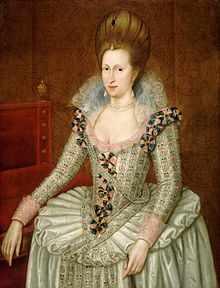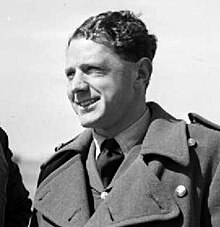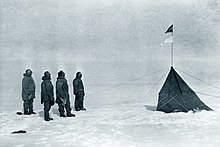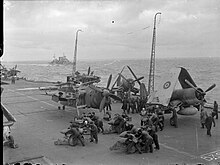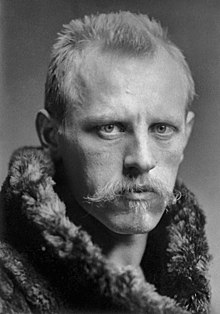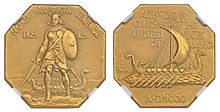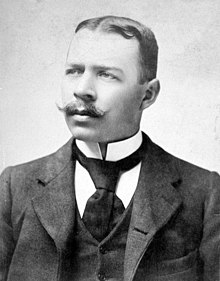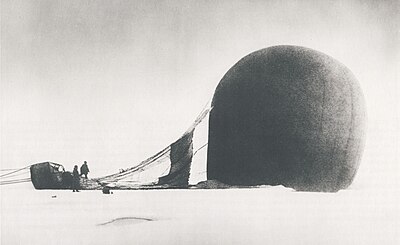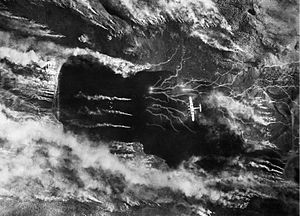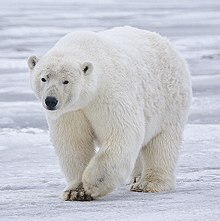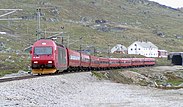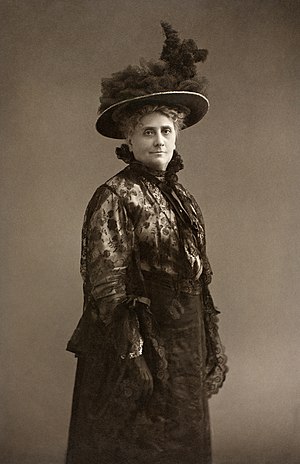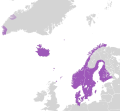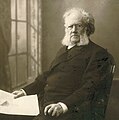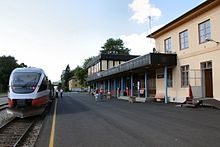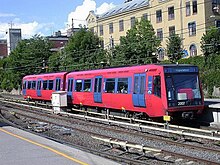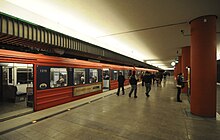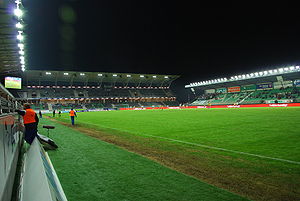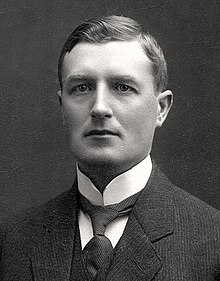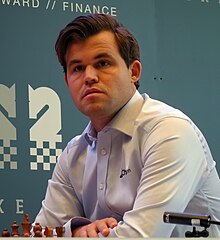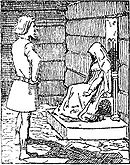
A | B | C | D | E | F | G | H | CH | I | J | K | L | M | N | O | P | Q | R | S | T | U | V | W | X | Y | Z | 0 | 1 | 2 | 3 | 4 | 5 | 6 | 7 | 8 | 9
The Norway Portal
Norge Portal

|

|

| |
Norway (Bokmål: Norge, Nynorsk: Noreg), formally the Kingdom of Norway, is a Nordic country in Northern Europe, situated on the Scandinavian Peninsula. The remote Arctic island of Jan Mayen and the archipelago of Svalbard also form part of Norway. Bouvet Island, located in the Subantarctic, is a dependency; Norway also claims the Antarctic territories of Peter I Island and Queen Maud Land. The capital and largest city in Norway is Oslo.
Norway has a total area of 385,207 square kilometres (148,729 sq mi) and had a population of 5,488,984 in January 2023. The country shares a long eastern border with Sweden. It is bordered by Finland and Russia to the northeast and the Skagerrak strait to the south. Norway has an extensive coastline facing the North Atlantic Ocean and the Barents Sea. Harald V of the House of Glücksburg is the current King of Norway. Jonas Gahr Støre has been Prime Minister of Norway since 2021. As a unitary state with a constitutional monarchy, Norway divides state power between the parliament, the cabinet, and the supreme court, as determined by the 1814 constitution. The unified kingdom of Norway was established in 872 as a merger of petty kingdoms and has existed continuously for 1151–1152 years. From 1537 to 1814, Norway was part of Denmark–Norway, and, from 1814 to 1905, it was in a personal union with Sweden. Norway was neutral during the First World War, and in the Second World War until April 1940 when it was invaded and occupied by Nazi Germany until the end of the war.
Norway maintains the Nordic welfare model with universal health care and a comprehensive social security system, and its values are rooted in egalitarian ideals. The Norwegian state has large ownership positions in key industrial sectors, having extensive reserves of petroleum, natural gas, minerals, lumber, seafood, and fresh water. The petroleum industry accounts for around a quarter of the country's gross domestic product (GDP). On a per-capita basis, Norway is the world's largest producer of oil and natural gas outside of the Middle East. The country has the fourth- and eight highest per-capita income in the world on the World Bank's and IMF's list, respectively. It has the world's largest sovereign wealth fund, with a value of US$1.3 trillion. (Full article...)
Selected article –
Selected picture –
In this month
- Harald Tom Nesvik (born 4 May 1966 in Ålesund, Norway) is a Norwegian politician. He is a member of the Progress Party (FrP) and is perhaps most famous outside Norway for nominating Tony Blair and George W. Bush for the 2002 Nobel Peace Prize.
- Einar Henry Gerhardsen (10 May 1897 – 19 September 1987) was a Norwegian politician from the Labour Party of Norway. He was Prime Minister for three periods, 1945 - 1951, 1955 - 1963 and 1963 - 1965.
- The Norwegian Constitution Day (parade pictured) is the National Day of Norway and is an official national holiday each year. Among Norwegians, the day is referred to simply as syttende mai (meaning May Seventeenth), Nasjonaldagen (The National Day) or Grunnlovsdagen (The Constitution Day), although the latter is less frequent[citation needed]. The day marks the signing of the Norwegian Constitution in Eidsvoll, 17 May 1814.
General images –
Selected biography –
Did you know –
- ...that Carl Fredriksens Transport, an operation that saved 1,000 Norwegians during the Nazi occupation of Norway, was code-named after King Haakon VII's (pictured) original name?
- ...that Peter Harboe Castberg is credited with building Christiania Bank og Kreditkasse into one of the leading banks in Norway?
- ...that over a ten-year period, Olaus Michael Schmidt served as Norwegian Minister of Justice for four non-consecutive terms?
Selected quote –
Categories
Selected panorama
Bodø is a city and municipality in the county of Nordland, Norway. Located just north of the Arctic Circle, Bodø is the largest city in Nordland, and the second largest in North Norway. (Full article...)
Main topics
Counties: • Agder • Innlandet • Møre og Romsdal • Nordland • Oslo • Rogaland • Troms og Finnmark • Trøndelag • Vestfold og Telemark • Vestland • Viken (county)
Culture: Bunad
• Constitution Day
• Cuisine
• Farm culture
• Jul
• Literature
• Music
• Cinema
History: Ancient Norwegian property laws • Nordic Stone Age • Nordic Bronze Age • Komsa • Fosna-Hensbacka culture • Funnelbeaker culture • Hamburg culture • Nøstvet and Lihult cultures • Maglemosian culture • Viking Age • Harald I of Norway • Olav IV of Norway • Haakon I of Norway • Olaf I of Norway • Olaf II of Norway • Battle of Stiklestad • Canute the Great • Magnus I of Norway • Harald III of Norway • Battle of Stamford Bridge • Magnus III of Norway • Sigurd I of Norway • Magnus V of Norway • Sverre of Norway • Haakon IV of Norway • Magnus VI of Norway • Eric II of Norway • Kalmar Union • Denmark–Norway • Union between Sweden and Norway • Dissolution of the union between Norway and Sweden in 1905 • Haakon VII of Norway • Olav V of Norway • Harald V of Norway • Occupation of Norway by Nazi Germany • Norwegian Campaign • Norwegian resistance movement • Legal purge in Norway after World War II • Foreign relations of Norway • Military of Norway • Norway and the European Union
Language: Å • Æ • Ø • Bokmål • Det Norske Akademi for Sprog og Litteratur • Differences between Norwegian Bokmål and Standard Danish • Høgnorsk • Nordic Council • Nordic Language Convention • Noregs Mållag • Norsk Ordbok • North Germanic languages • Norwegian alphabet • Norwegian dialects • Norwegian Language Council • Norwegian language conflict • Norwegian phonology • Nynorsk • Old Norse • Riksmålsforbundet • Russenorsk
Politics: Constitution • Counties (Fylker) • Elections • European Union relations • Foreign relations • Government • Monarchy • Municipalities (Kommuner) • Political parties • Prime Minister • Norwegian nationalism • Romantic nationalism • Sámi Parliament • Storting



